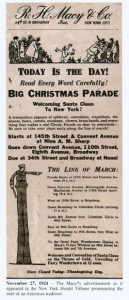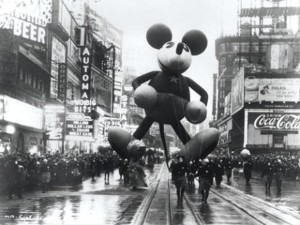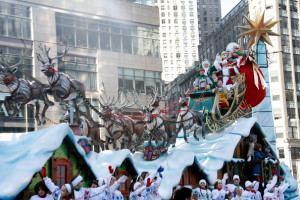My teenager daughter’s birthday is this month and she wanted to dress-up with her girlfriends and have a limo take them to a fancy dinner. Well, my husband and I decided to add a little fun and have the girls make a quick trip to our local mall for a scavenger hunt before dinner at a restaurant nearby. After the party, our daughter said it was the best birthday she had ever had! My husband and I actually enjoyed this party, too. In this post, I will discuss what it takes to have a scavenger hunt party at the mall!!
Planning a Mall Scavenger Hunt
The basic idea for a scavenger hunt at the mall is really very simple and it was the perfect birthday party to have for our teenaged daughter and her group of friends. The 10 girls that attended the party were divided into 5 teams, two girls to each team. (Party Tip: I would not recommend this party idea for girls that are younger and need to be supervised by their parents)
To start the process of planning the party, we took a quick trip to our local mall to gather ideas and suggestions for the scavenger hunt. Our first stop after arriving at the mall was the customer service desk which quickly referred us to the mall administration office. This was a good idea because it is important to confirm the rules and regulations of the mall and another reason is that the mall security team should be notified of the party is case there are any problems or concerns. (Party Tip: When we were writing the scavenger hunt list, we made sure to include a friendly reminder to the girls about having good manners and to behave properly while participating in the scavenger hunt)
Another great reason for stopping by the mall office is to inquire about any free gift items that were available for the scavenger hunt participates. At our local mall, we were able to get a free “leather” shopping bag for each of the girls. This worked out wonderful for our party because each team had a bag to put all the items that they were gathering during the game. (Party Tip: My suggestion is when planning a mall scavenger hunt is to visit the mall office to inquiry about your local mall’s policies and procedures for parties and maybe if you are lucky you can score some free items, it doesn’t hurt to ask … you never know what they will do for you!)
The Mall Scavenger Hunt List
Our scavenger hunt was divided into three different sections and each section had a list of several different tasks:
- The “find” section – a list of items that needed to be found
- The “photo” section – a list of photos that needed to be taken
- The “quiz” section – a list of questions that needed to be answered
(For some specific items or tasks that we used for each section, please see the scavenger hunt list that we used for our daughter’s party at the end of this post)
Once we determined the tasks for each section, we printed out the scavenger hunt list for each team. Shown in the photo below is our printed scavenger hunt list for my daughter’s party. We decided to make it into a booklet form instead of one printed page. I bought some inexpensive blank cards and envelopes at my local craft store, printed out the rules and scavenger hunt list in booklet form and stapled it to the inside of the blank card. Next, I decorated the front of the card with strips of black crystals and added self-adhesive glitter stickers to identify the different teams.
Also, in the photo shown below, is the scavenger hunt package that each team was given before the game started. As you can see, the black “leather” bag that the mall provided had a pocket which was the perfect place to store the scavenger hunt list and a map of the mall. We also proved two pens for each team in case they lost one they would have a spare. (Party Tip: If your mall doesn’t provide any shopping bags don’t worry because you can purchase inexpensive gift bags from your local craft store!)
Before sending the girls out into the mall, we met inside at the mall entrance and quickly went over the rules and confirm the finish line and designated time that the game needed to be completed. We allowed an hour and a half for the scavenger hunt, we expected the girls to take longer but most teams were done within an hour because our scavenger hunt list was fairly easy. (Party Tip: Each mall has different stores and your scavenger hunt list should be altered to fit with those stores within your mall)
Here is a sample of our Mall Scavenger Hunt list:
Rules
- The Mall Scavenger Hunt will be a timed one hour event. The start time is 6:00 P.M. and the finish time is 7:30 p.m. Finish line is the same mall entrance as the start of game.
- The game is divided into three sections: Find, Photo, and Quiz. Please try to complete each section. Each task is worth one point.
- Bonus points can also be earned and are noted in the game.
- Points are given to teams that complete the game and return to the finish line sooner but points are also taken away for teams that arrive after the designated time.
- Please be polite to other shoppers and store staff while participating in the game.
- Please be safe and follow the rules of the mall, no running, blocking store entrances, etc.
- The team with the most points earned at the end of the game will win the grand prize!
- Call us if there are any questions about the game or other concerns or problems.
Find
Please collect the following items: (use the black tote to store the items)
- A perfume sample (any store)
- A business card from two different stores (usually found on the check-out counter)
- A napkin from Elevation Burger
- A “Paint & Play” vinyl sampler sheet from Sephora with your favorite nail polish color
- A small sample spoon from PinkBerry
- An employee application (any store)
- An unused ketchup packet
- A store catalog (any store)
- A Starbucks straw
- A found receipt with today’s date
- A plastic fork
- A take-out menu (any restaurant)
- A make-up sample (any store)
- A store credit card application (any store)
- An unused sugar packet
Photo
Using your cell phone, please take a photo of the following: (please save the photos for proof!!)
- A photo with a car (bonus point if sitting in the driver’s seat)
- A photo of team wearing hats
- A photo of a fire extinguisher
- A photo of the team wearing sunglasses
- A photo of a sale sign (10% = 1 point , 20% = 2, 30% = 3, etc.)
- A photo with a butterfly
- A photo of team in one bathroom stall (bonus point for a photo of team washing hands in one sink)
- A photo of team riding the escalator
- A photo of team wearing tiaras
- A photo of team trying on red shoes
- A photo of team reading a book
- A photo in front of the team’s favorite store
- A photo of team cuddling a teddy bear
- A photo of team with a cute guy
- A photo of team in front of store that begins with a C
Quiz
- Please answer each of the following questions: What is the flavor of the month at Pinkberry?
- What is the name of a candy store in the mall?
- In the women’s bathroom near the food court, how many bathroom stalls are there? (Bonus points – how many children sized sinks?)
- What is the name of the store that is opening soon in the mall?
- What is the store with a compass direction in the name?
- What is the cheapest item you can buy at Chipotle?
- How many colors of a Tesla car are available?
- What store in the mall that is named after a fruit?
- Name an optional Elevation burger topping that starts with the letter “J”.
- What store has a color in the name?
Thanks for playing the game! When every task is completed, please return to the same mall entrance as the start of game.
For more themed ideas and additional information on children’s birthday parties, please click on the following links – Children’s Birthday Parites Part One and Part Two.





















